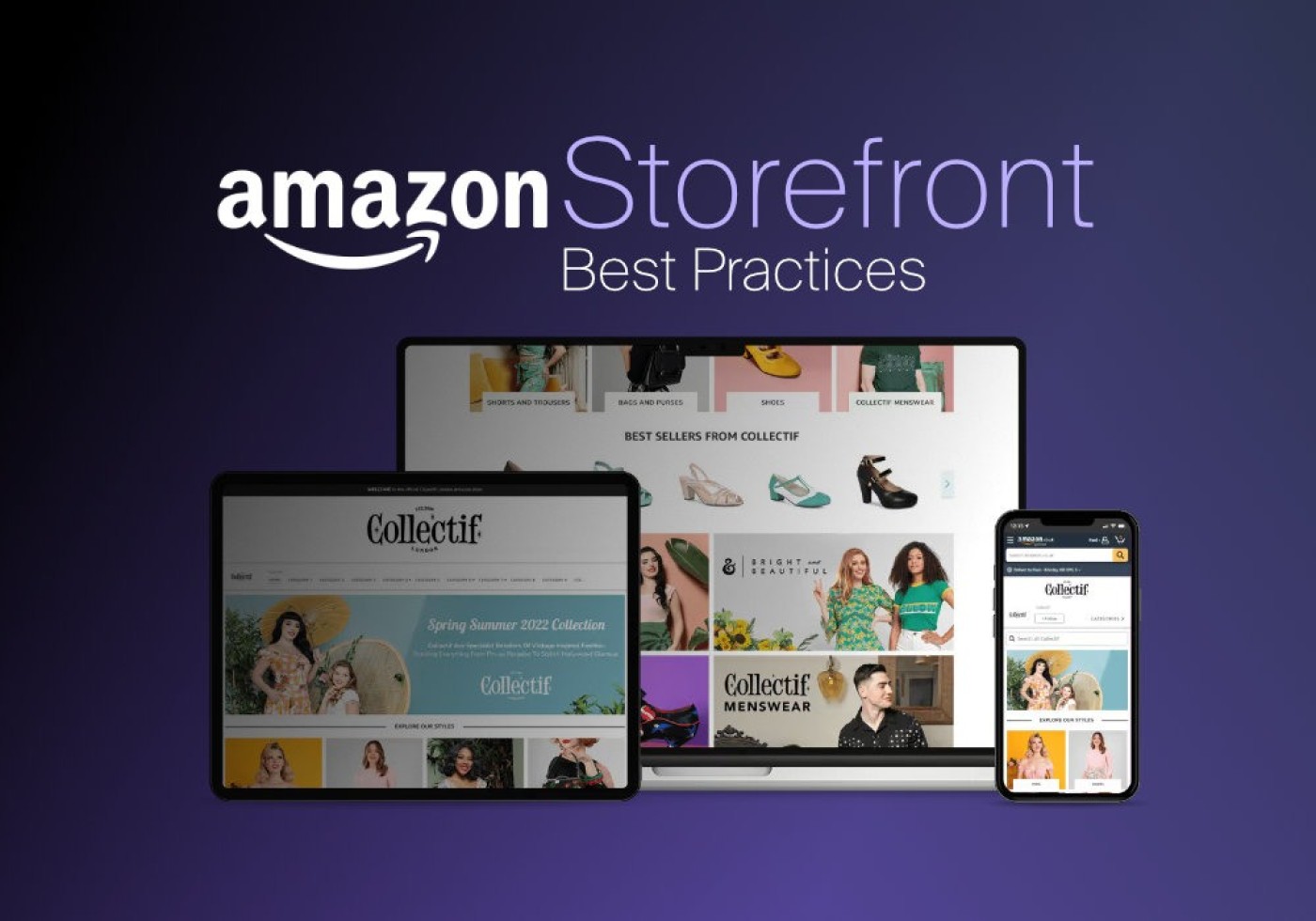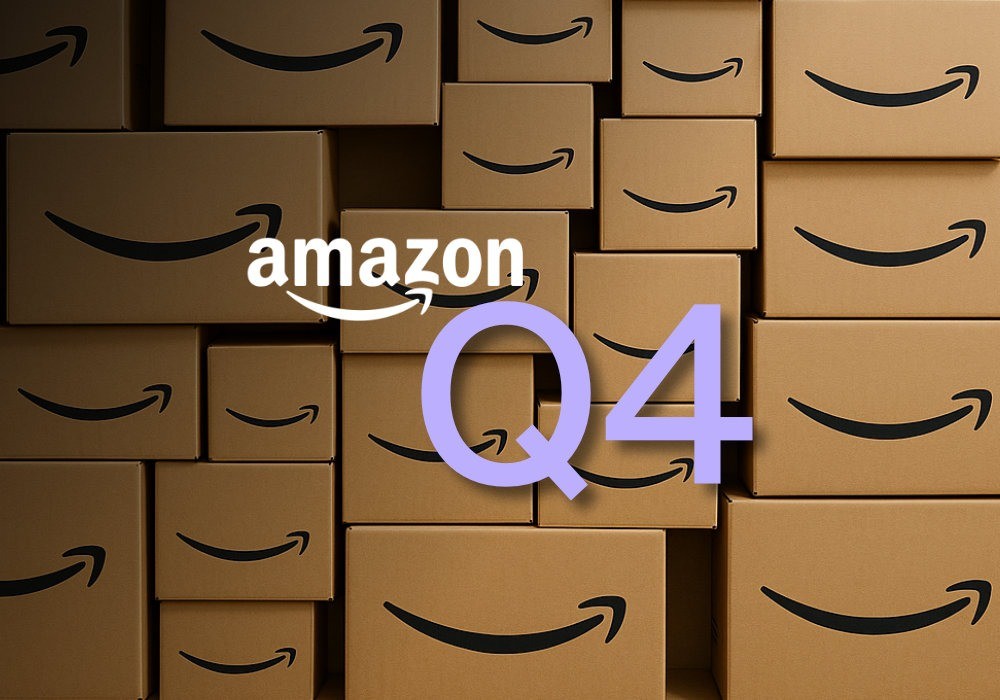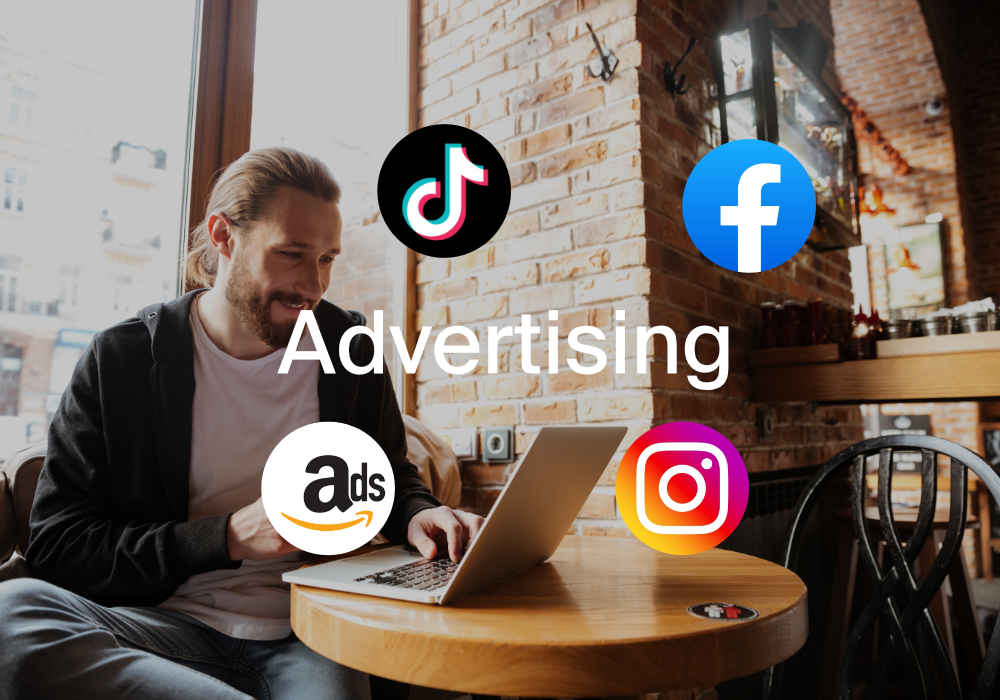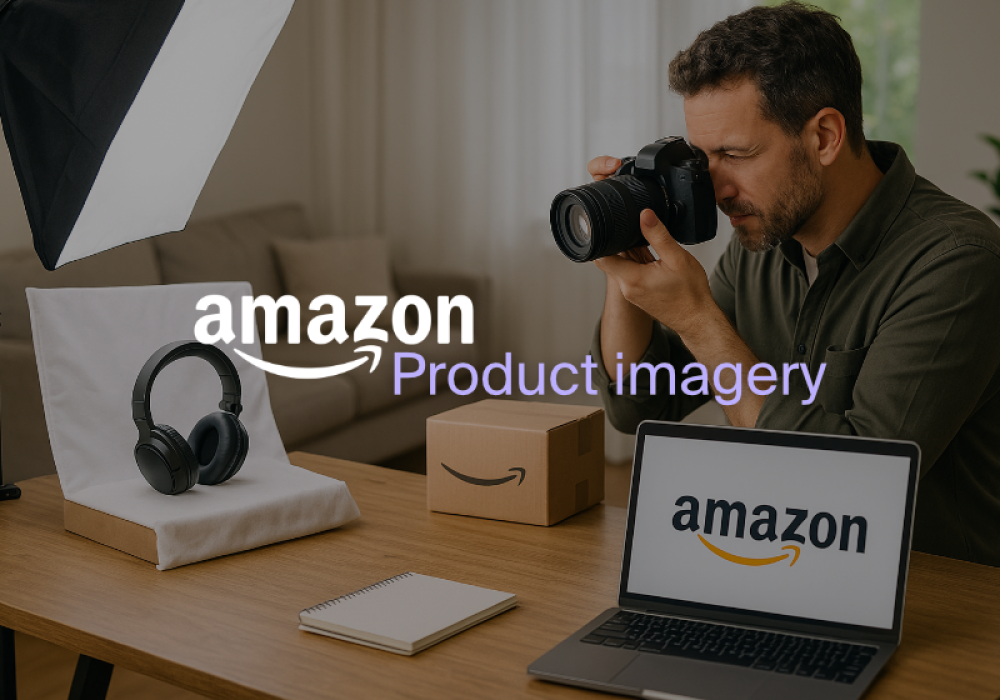Your Amazon Storefront is your brand’s dedicated space on the largest online marketplace in the world. Unlike standard product listings, your Storefront lets you tell your story, showcase your products, and guide shoppers through a fully branded experience.
Done right, it becomes more than just a shop — it’s a conversion machine that builds loyalty, drives repeat purchases, and sets you apart from competitors.
This guide provides a complete set of best practices for designing a high-performing Amazon Storefront, including:
- Optimising hero images and navigation.
- Highlighting your leading products and promotions.
- Using professional imagery and videos.
- Designing for all devices.
- Maintaining brand consistency.
- Making the most of Amazon Store content sections.
Why your Amazon Storefront design matters
Your Storefront is the first real chance for many customers to experience your brand outside a single product page. The way you design it influences whether they buy, browse further, or leave.
A great Storefront can:
- Increase conversion rates.
- Build customer trust and recognition.
- Encourage multi-item purchases.
- Showcase your brand’s value and story.
Hero images: set the tone from the start
The hero image (or banner) is prime real estate — it’s the first thing shoppers see.
Best practices:
- Use high-resolution images (minimum 3000px wide).
- Show your products in aspirational lifestyle settings.
- Add subtle branding without cluttering the design.
- Update regularly to match seasonal promotions or new launches.
- Ensure hero images are clear and legible on mobile.
Highlighting your leading product
Your most popular or brand-defining product should be front and centre.
How to feature it:
- Place it above the fold on your homepage.
- Use both clean product shots and lifestyle imagery.
- Add a short, benefit-driven headline.
- Link directly to the product detail page.
Promotions and seasonal sales
Amazon’s Store Builder allows you to make promotions impossible to miss.
Best practices:
- Use banner tiles or featured deal sections.
- Dedicate a sub-page to promotions.
- Align campaigns with Prime Day, seasonal trends, or product launches.
- Keep the design on-brand to avoid looking cheap or off-theme.
Navigation and sub-pages
If customers can’t find what they need quickly, they’ll leave.
Best practices:
- Keep menus to 5–7 main categories.
- Group products logically (category, collection, or use case).
- Add sub-pages for bestsellers, new arrivals, seasonal collections, and promotions.
- Include an ‘About Us’ page for brand storytelling.
Types of Amazon Storefront sections and how to use them
Amazon’s Store Builder offers a variety of content sections you can mix and match to create an engaging, shoppable experience.
Key sections and best uses:
- Hero Image / Banner – Large visual header for branding, seasonal campaigns, or promotions. Always high resolution and brand-aligned.
- Top-Selling Products – Automatically or manually showcase best performers to increase conversions.
- Product Grid – A clean layout for multiple products; ideal for full category displays.
- Featured Product – Spotlight a single product with larger imagery and detailed text.
- Product Collection – Curated sets of products (e.g., “Summer Essentials” or “Gift Ideas”).
- Shoppable Image – Lifestyle image with clickable product hotspots for immersive browsing.
- Image with Text / Text with Image – Combine visuals with copy to highlight features or benefits.
- Split Section – Side-by-side layout for two key messages or product groups.
- Video – Demonstrations, product reveals, or brand storytelling; keep short, engaging, and captioned.
- Video Reveal Section – Interactive video module for more dynamic content.
- Featured Deals – Showcase discounted or limited-time products with urgency.
- Recommended Products – Amazon-powered suggestions to increase basket size.
- Gallery / Image Carousel – Multiple images users can scroll through; great for product variations or campaign visuals.
- Background Video – Creates an immersive feel; ensure file size is optimised for fast loading.
- Text-Only Section – For detailed product info, brand story, or guarantees.
Using a mix of these elements allows you to balance sales-driving sections (top sellers, featured deals) with brand-building sections (hero imagery, videos, lifestyle content).
Imagery best practices
Images are your silent salespeople.
Best practices:
- Maintain consistent lighting, tone, and style across all pages.
- Combine clean product shots with lifestyle photography.
- Avoid overusing text overlays — keep the focus on the product.
- Test images on both desktop and mobile to prevent cropping issues.
Video best practices
Video adds movement and credibility to your Storefront.
Best practices:
- Keep it short (30–120 seconds).
- Include captions for sound-off viewing.
- Use both feature-led and lifestyle-focused clips.
- Ensure branding is subtle but present throughout.
Designing for all devices
Over 60% of Amazon traffic comes from mobile users.
Best practices:
- Test every section in Amazon’s Store Preview on desktop, tablet, and mobile.
- Use layouts and imagery that adapt cleanly across breakpoints.
- Keep text concise so it’s easy to read on small screens.
- Ensure CTAs remain visible without scrolling.
Brand consistency
A Storefront should look like an extension of your brand, not a random collection of images.
Best practices:
- Stick to your colour palette and font style.
- Repeat key brand messages throughout.
- Align visuals with your external marketing and website.
Ongoing optimisation
Your Storefront is never “finished.”
Best practices:
- Review analytics in Amazon Store Insights.
- Swap in fresh hero images seasonally.
- Test section arrangements for better engagement.
- Update promotions and product features regularly.
Examples of standout Amazon Storefront designs
An excellent Amazon Storefront is all about user experience. From the moment a shopper lands, they should feel immersed in your brand and see clear paths to explore products and move toward purchase. Here are 10 examples that showcase strong design principles in action:
Crocs – A vibrant, colourful store with a hero image highlighting custom Jibbitz charms. The first tiles target different audiences (kids, women, athletes), while simple navigation and fun imagery keep the experience light and on-brand.
PK Grills – Leads with rich video and photography showing products in action. Clean product images and clear descriptions guide shoppers to purchase.
La Maison Du Chocolat – Uses a luxurious marble backdrop with a mix of video and photography. Product categories like truffles and macarons are supported by brand storytelling on quality and sustainability.
LEGO – Bright, bold colours match the brand’s playful identity. Products are organised by theme, age, and style, with seasonal and holiday sets featured prominently. Includes an interactive gift finder.
Callaway – Sleek and product-focused with a full-screen autoplay video. Categories are easy to navigate, and visuals are crisp and clean.
Lenovo – Makes excellent use of background video tiles to showcase featured products. Navigation tiles direct shoppers to clear product categories, supported by a customer story video.
Beats – High-impact video with celebrity endorsement from Lebron James sets a premium tone. Clean, brand-aligned visuals and infographics highlight product features.
Petcube – Combines product videos, happy pet imagery, and benefit-led copy. Clearly communicates how products enhance the owner-pet connection.
Nivea – Consistent use of its signature blue across the entire store. Bestsellers are featured at the top, supported by a mix of product and lifestyle shots.
Tress Wellness – Soft, calming colour palette paired with quality-focused messaging. Includes looping videos to showcase scents and product details.
Conclusion
An Amazon Storefront is more than a landing page — it’s your brand’s home inside the marketplace. By combining engaging hero images, strategic leading product placement, clear navigation, promotion-focused sections, and a mix of Amazon’s rich content modules, you create a store that sells and builds brand loyalty.
Consistent updates, mobile-friendly layouts, and on-brand visuals will ensure your Storefront continues to convert at its highest potential.



